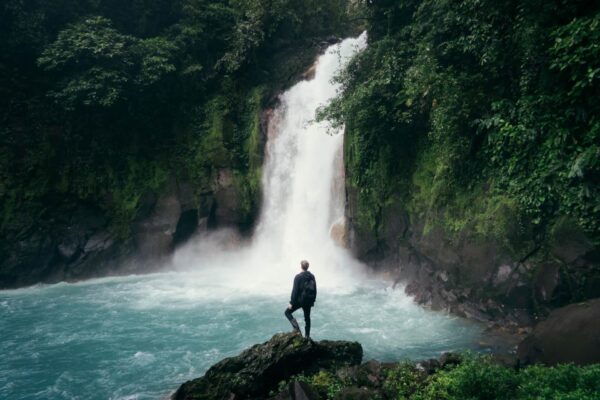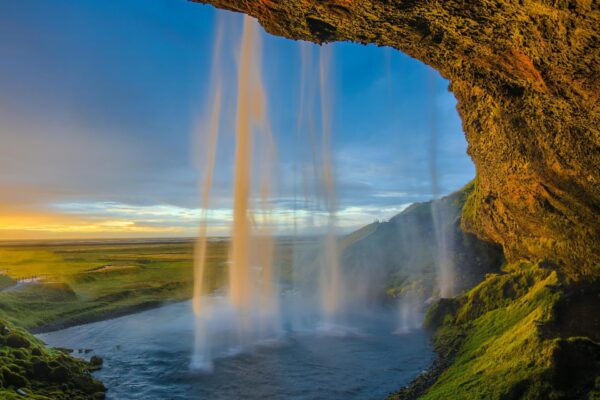Iceland is a dream destination for anyone who loves unbridled nature motifs, wants to go on a photography trip or simply wants to take a break in the raw beauty of the North Atlantic island.
Especially if you are travelling to Iceland for the first time, a round trip on the Ring Road is the perfect way to do so. It will give you an overview of the whole country, a unique insight into different regions of the island and the opportunity to visit the many natural sights along the Ring Road.
Find out what these sights are, what there is to see in the individual regions and what the Golden Circle Route is all about.
Iceland round trip: what are the options?
If you are planning a round trip around Iceland by car or campervan, you can either take the Ring Road or the Golden Circle Route. The latter takes you to natural sights in the vicinity of Reykjavík, while the Ring Road allows you to drive around the entire island for over 1200 kilometres.
They differ not only in their length, but also in their geographical location. If you don’t know exactly which one suits your travel plans better, you should take a look at our guide to travelling around Iceland.
Iceland: the Ring Road
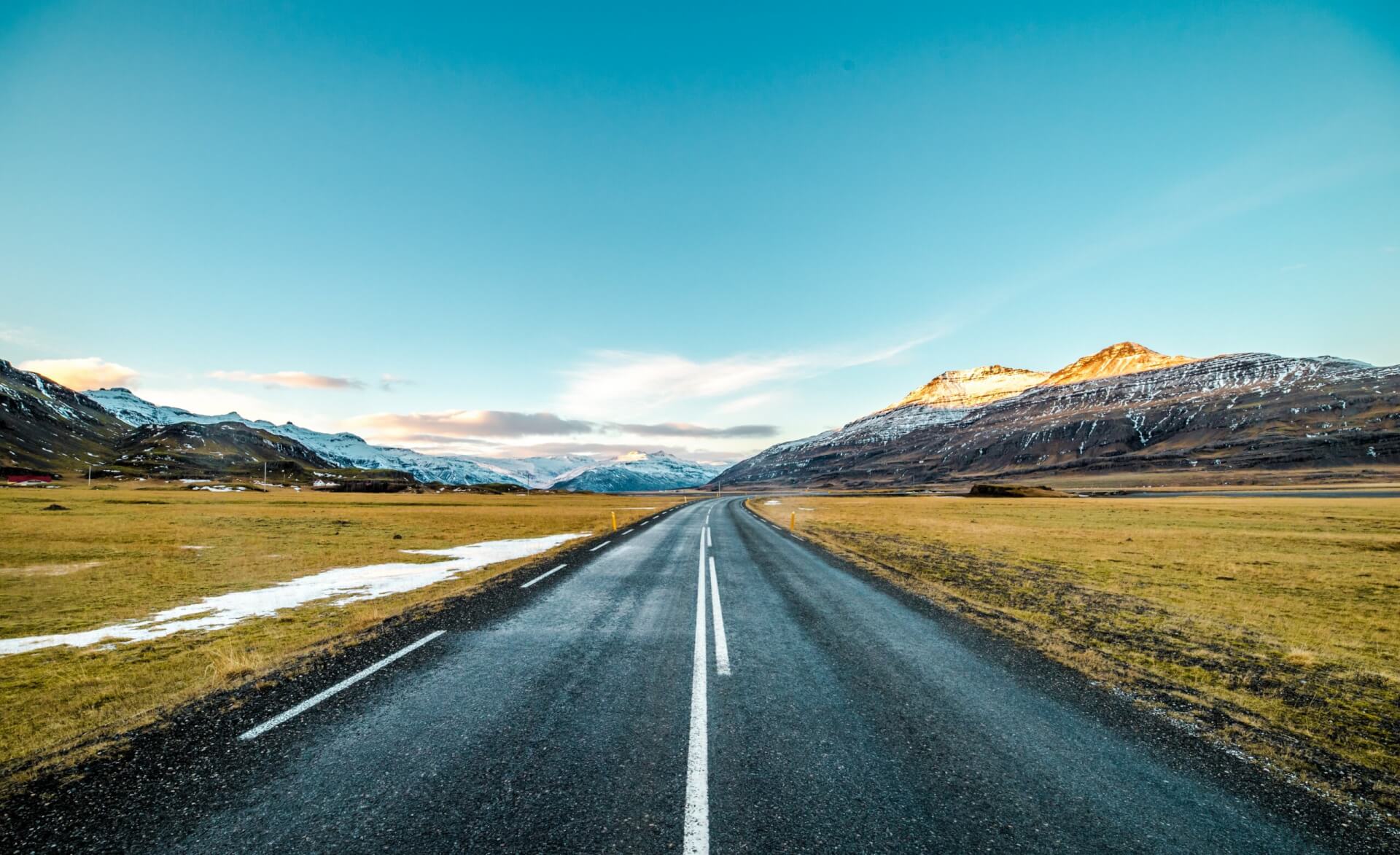
The Ring Road is the classic choice for round trip travellers. It leads you around the island and thus offers a good overview. But if you want to explore more remote regions, such as the highlands in the east, the fjord landscape in the west and the Rekjanes Peninsula, you have to leave the road.
Overall, you should take at least a week, preferably two, to explore the Ring Road and make as many detours as you like. As there are many popular highlights along the road, you can see as much as possible.
You should bear in mind that the Ring Road is often difficult or even impassable in winter and that the tourist hotspots can get a little crowded in summer. If you are looking for peace and solitude, choose the low season or travel to more remote areas, since every area in Iceland is actually a highlight.
Iceland sights on the Golden Circle Route
At around 300 kilometres, the Golden Circle Route is significantly shorter and runs close to the capital Reykjavík. However, you shouldn’t plan just one day here either, as there are several sights in the so-called ”Golden Circle” for which you should definitely take enough time.
Thingvellir National Park: a national park with history
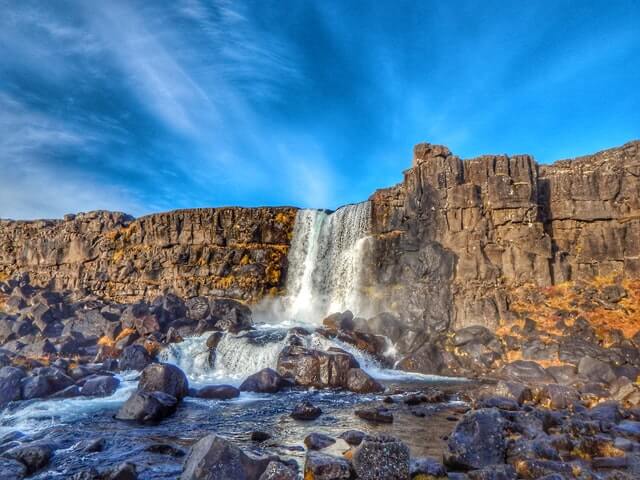
Thingvellir National Park provides not only beautiful nature, but also a great cultural importance to Icelanders. This is where the so-called Things took place in the Middle Ages, where laws were passed and court proceedings were held. People travelled here from all over the country and set up camp.
Therefore, you should as a traveller behave particularly carefully and considerately. The park is also popular for observing the Northern Lights and thus, a huge highlight for photo travellers.
Gullfoss and Haukadalur: experience volcanism up close
Haukadalur is known for its volcanic activity. Here you can experience hot springs and geysers. Strokkur is particularly famous and you will also find Gullfoss, the golden waterfall.
It is one of the countless waterfalls in Iceland with two tiers and plunges over 30 metres into the depths. If you want to experience Iceland’s forces of nature, this is the perfect place for you. A little less visited, but also beautiful, is Bruarfoss, about 20 kilometres from Gullfoss.
Iceland sights on the Ring Road – a round trip
If you want to go on a longer tour, the ring road is a good idea. Due to the special geographic and climatic conditions in Iceland, many settlements have been built here. It is very well developed for tourism and offers excellent connections to many nature highlights, such as national parks, hot springs and waterfalls.
Iceland sights at a glance: Map
Sights in Reykjavík
Due to its good connections, Reykjavík is the starting point for many travellers . Especially if you are travelling by plane, you will probably start here, as Keflavík Airport (pronounced Keplavik, with a long ”i”) is connected to international air traffic.
As the northernmost capital in the world, Reykjavík only has around 140,000 inhabitants, but is nevertheless the cultural centre of the country. An international atmosphere, many colourful houses, art and music await you here.
Architecturally, the Hallgrímskirkja, the more than 74 metre high Lutheran church, which located on a hill, is well worth a visit. Climb it and enjoy the view of Iceland’s capital.
The blue lagoon – and its alternatives
A popular destination for many tourists: the Blue Lagoon, a geothermal bath in Reykjavík. But even though the hot water of this outdoor pool is pleasant and the view impressive, we recommend the equally beautiful but less crowded alternatives. The Secret Lagoon is also, despite its name suggesting the opposite.
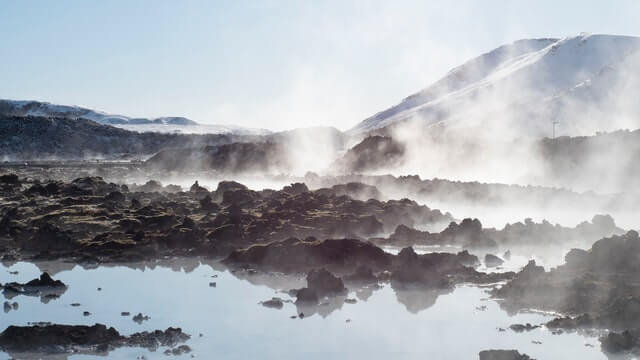
Hot springs and geothermal baths can be found all over the island. That’s why the outdoor pools, which you can find in almost every town, are open in winter as well. In Drangsnes in the west of Iceland, for example, there are three hot pools in the town centre where you can go swimming.
If you need more inspiration, check out these five hotspots that are particularly worth a visit (although all of them are worth a visit, of course, so don’t be afraid to visit spontaneously):
- Seljavallalaug
- Krossneslaug
- Laugavallalaug
- Reykjadalur
- Hoffel Hot Pots
South Iceland Sights
If you are travelling east on the ring route from Reykjavík, you will first travel to the south of the country. It is more touristy and usually a little more crowded than the north and areas further away from the ring road. Here you will find, among other things, the attractions of the Golden Circle.
Further, you can marvel at Skógafoss and Seljalandsfoss, two breathtaking waterfalls that are both only about two hours away from Reykjavík. If you follow the ring road a little further, you will soon discover the plane wreck on the beach at Sólheimasandur. It originates from a military aircraft that crashed in the 1970s, whose occupant fortunately survived.
Vík: The village with the black beaches
Vík is a picturesque coastal village in the very south of Iceland. Although only a few hundred people live there, it is very popular with travellers because of its beautiful surroundings.
One of the reasons is that it is a particularly good place for bird watching and you will find one of Iceland’s famous black lava beaches, which were created by volcanic activity.
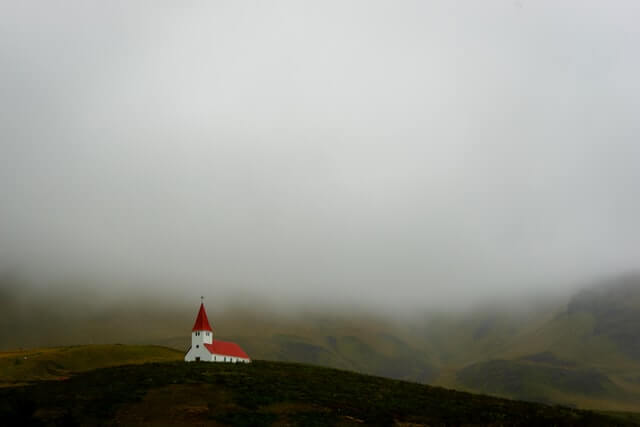
Fjaðrárgljúfur
Fjaðrárgljúfur (pronounced: Fiathraurgliufür) is a gorge that is up to 100 metres deep in some places and around 2 km long. It is one of the filming locations for Game of Thrones and is therefore very popular in summer. If you haven’t seen the series, it is however, still a breathtaking place.
Places of interest in East Iceland
Skaftafell National Park and Svartifoss
Skaftafell National Park and its famous waterfall, Svartifoss, not only enchant visitors with their basalt landscape, but also with the glaciers you can see here. If you would like to admire the glacier landscape up close, a guided tour is a good option.
Svartifoss, which translates as ”black waterfall”, cascades from a rock characterised by basalt columns. It may not be one of the most powerful waterfalls in Iceland, but its extraordinary surroundings make it just as impressive.
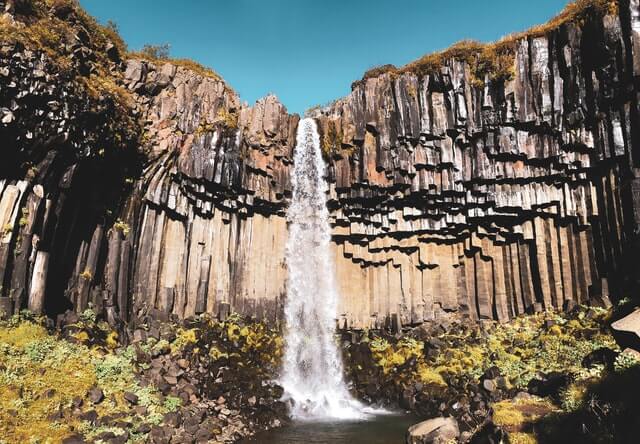
Diamond Beach: the icy Diamond Islands
Diamond Beach is located in the glacier area between Vík and Höfn, more precisely at the Jökulsárlón glacier area. It takes its name from the icebergs that drift from the glacier into the bay. These melt and smaller, glittering pieces of ice, reminiscent of diamonds, are washed up on the beach.
Jökulsárlón: glacial lakes and icebergs
Jökulsárlón is the name of the large glacier area between Vík and Höfn. Here you will find a variety of different glacial lakes and floating icebergs. This region is an excellent place to watch seals.
Höfn: town of the south-east
If you continue along the ring road, you will reach Höfn in a few hours, a small community in the south-east of Iceland, but much larger than Vík. Travellers mainly stop here to stock up on supplies and do some shopping. If you stop here, the village harbour is well worth a visit.
The plateaus and east fjords
If you leave the ring road, you can visit the plateau in the east of Iceland. This remote and unspoilt landscape is easy to drive through, especially in the warmer half of the year. In winter, a visit is somewhat more difficult due to the many mountain passes and the challenging road conditions.
You will also find the so-called East Fjords, which characterise the rugged and breathtaking mountain landscape. The largest town in this region is Egilsstaðir with just under 2500 inhabitants. If you’re lucky, you might come across wild reindeer herds here, which were imported from Norway in the 18th century.
Iceland sights in the north
The Mývatn region
The Mývatn region is home to the famous lake of the same name. The area is one of the most bird-rich regions in Iceland, making it ideal for nature lovers and birdwatchers.
Húsavík: the capital of whale-watching
Húsavík is the best address for whale watching in Iceland. The small town in the north of the island offers a wide range of different tours for observing the marine mammals. There is even a whale museum here. Puffins can also be observed and photographed.
The sights of the Westfjords: experience Iceland’s most remote region
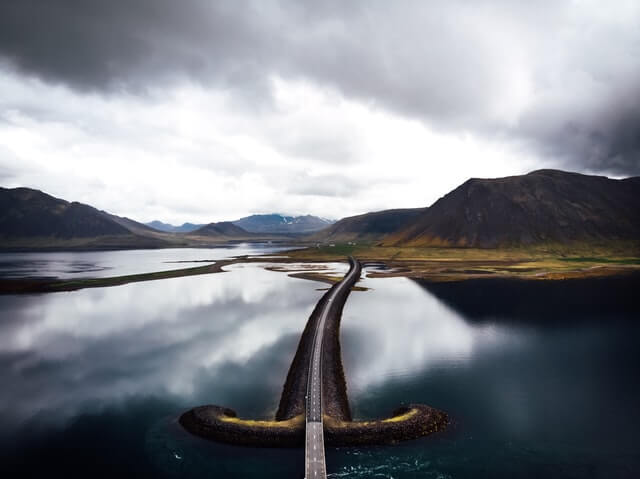
In order to get to the Westfjors, you have to leave the ring road again, as they are even more remote than the plateaus with their east fjords.
Therefore, it is not advisable to travel here as a tourist in winter. Isafjördur is the largest town with a population of around 2500. You should stock up on groceries there and at the other rather rare shopping opportunities and don’t forget to refuel.
The reasons why so many travellers are enthusiastic about the Westfjords are the remoteness, which means that you won’t meet other tourists here so quickly, and the scenic beauty. If you don’t have that much time, there is the option of flying to Isafjördur from Reykjavík and hiring a vehicle there.
Cape Bjargtangar: cliffs and puffins
Cape Bjargtangar is the most westerly point in Iceland. Many people come here for the more than 400-metre-high cliffs, topped by an old lighthouse. Others come here for the birdwatching, since there is hardly any other place in Iceland where there are as many seabirds as here.
Other popular destinations in West Iceland:
- Snæfellsjökull National Park
- Kirkjufell: a mountain almost 500 metres high
- Gatklettur: a natural stone arch between Arnastapi and Hellnar and a famous photo motif
Preparation is everything
If you are planning a trip along the Ring Road, you should never underestimate the conditions. From October to April in particular, the weather is almost unpredictable. In remote regions, you should therefore take every opportunity to fill up your petrol tank and stock up on provisions.
Further, you should invest in good functional clothing and outdoor equipment, as you will definitely need it in Iceland. Additionally, you should always plan for heavy rain and storms.
